Physical Address
304 North Cardinal St.
Dorchester Center, MA 02124
Deposition of calcium pyrophosphate dihydrate or calcium hydroxyapatite within soft tissues is called mineralization or calcification
Metastatic: the result of abnormal calcium metabolism
Calcinosis: occurring with a normal calcium metabolism
Dystrophic: related to tissue damage
Ossification: bony trabeculae are discernible (either ectopic or heterotropic) ▸ calcium deposits tend to be more densely sclerotic than in normal bone
The differential diagnosis is divided into:
Generalized calcification (see separate section)
Localized calcification
Ossification
Any cause of focal soft tissue necrosis (e.g. injection sites, radiation damage, thermal injuries) can predispose to calcification
Blunt trauma can cause fat necrosis within the subcutaneous tissues and areas of dystrophic calcification
Any haematoma (particularly subperiosteal) may calcify
Calcific myonecrosis: calcification of atrophic muscles occurring 1–2 months after a severe crush injury
Widespread soft tissue calcification is a rare manifestation of disseminated malignancy where there is hypercalcaemia associated with extensive bone destruction (e.g. metastases, leukaemia and myeloma)
Localized intratumoral calcification may occur within any soft tissue tumour due to haemorrhage or necrosis
Benign mineralizing tumours: soft tissue chondroma (punctuate or ‘ring and arc’ calcification) ▸ lipoma (ossification can occur, especially if it is parosteal) ▸ haemangiomas (phleboliths)
Malignant mineralizing tumours: extraskeletal osteosarcoma ▸ extraskeletal chondrosarcoma ▸ synovial sarcoma (with a central rather than peripheral distribution)
This follows inappropriate differentiation of fibroblasts into osteoblasts in response to local inflammation
Developmental causes include fibrodysplasia ossificans progressiva, melorheostosis and progressive osseous heteroplasia
Post-surgical: this particularly occurs following a total hip arthroplasty (± pain and restricted movement)
Post-traumatic:
Pellegrini–Stieda lesion: ossification of the medial collateral knee ligament
Neurogenic heterotropic ossification: soft tissue ossification associated with CNS injuries (with prolonged unconsciousness and spinal trauma) ▸ there is a periarticular distribution (commonly affecting the hips) ▸ surgery is associated with recurrence
Avulsion of an ossification centre: in the skeletally immature an avulsed ossification centre may continue to grow ▸ this may present later as a large ossified soft tissue mass (commonly affecting the pelvic and hamstring pelvic origins)
Heterotopic bone formation within muscles, tendons and fascia following trauma ▸ it is possibly due to haematoma ossification or displacement of periosteal elements into the soft tissues
Haemorrhage is followed by mineralization ▸ this is first seen in the periphery with a gradual reduction in the size of the mass (which are both helpful in distinguishing from a mineralizing soft tissue sarcoma)
Early biopsy should be avoided (as it can resemble a soft tissue osteosarcoma)
It is associated with burns and paraplegia ▸ it is commonly seen around the elbow and in the thigh
A hypervascular lesion
Increased activity
T2WI/STIR: florid perilesional oedema involving the whole affected muscle compartment
Pseudomalignant myositis ossificans: this is similar radiographically and pathologically to myositis ossificans (but there is no history of trauma)
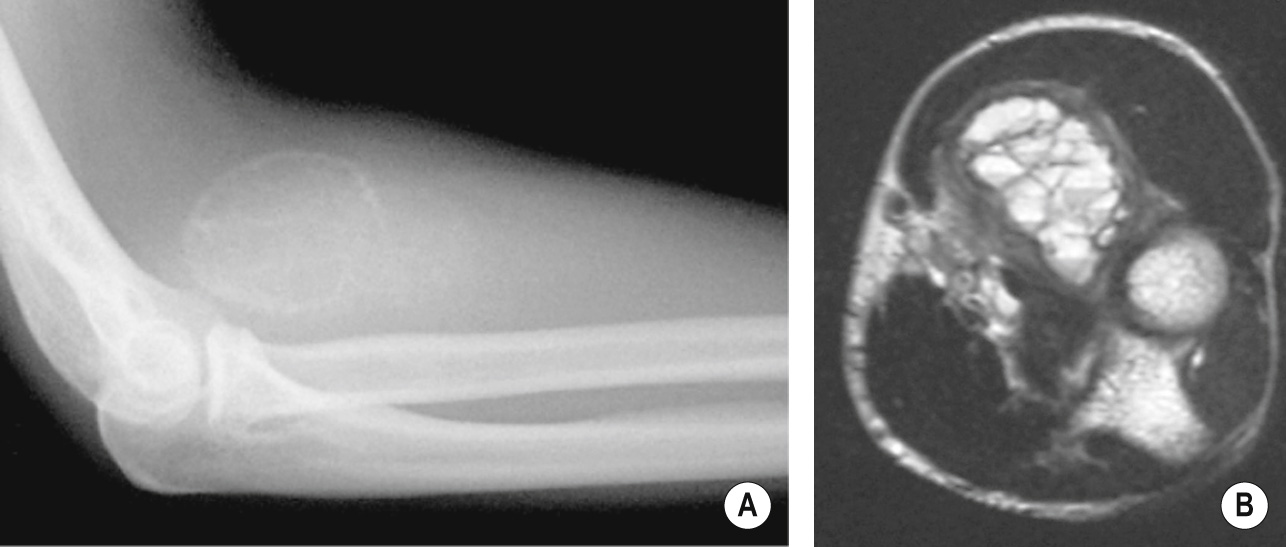
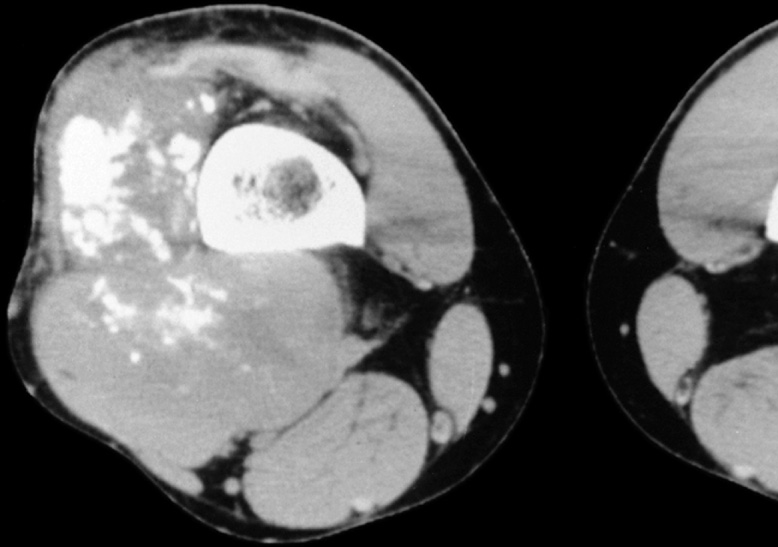
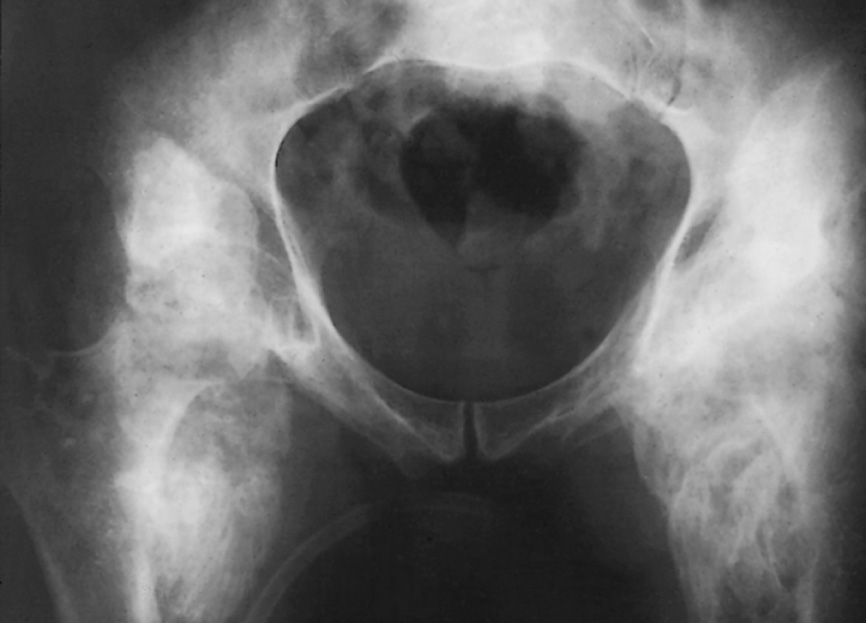
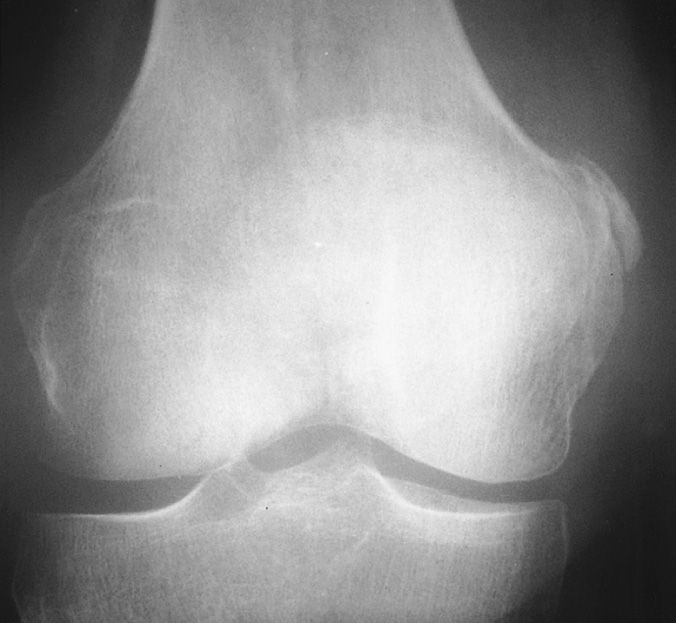
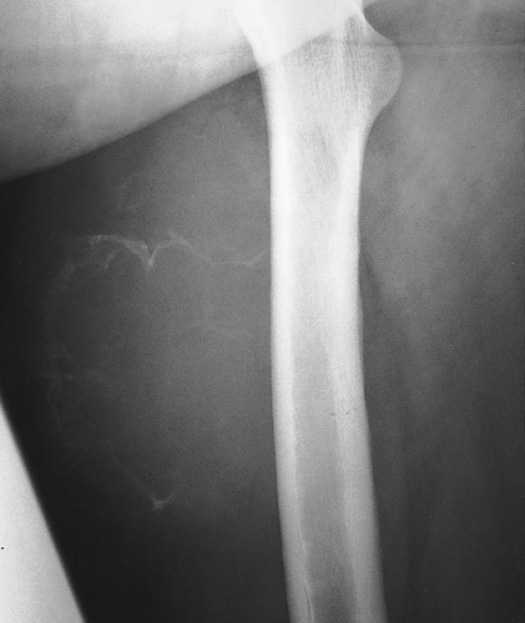
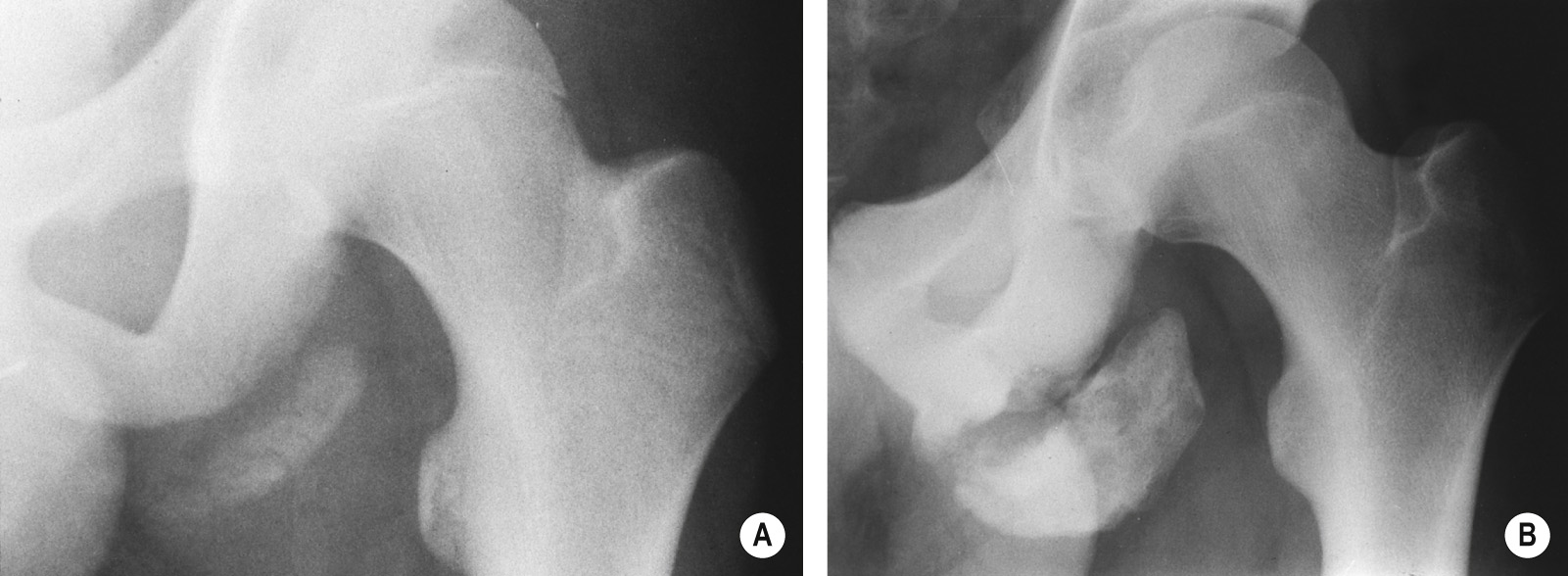
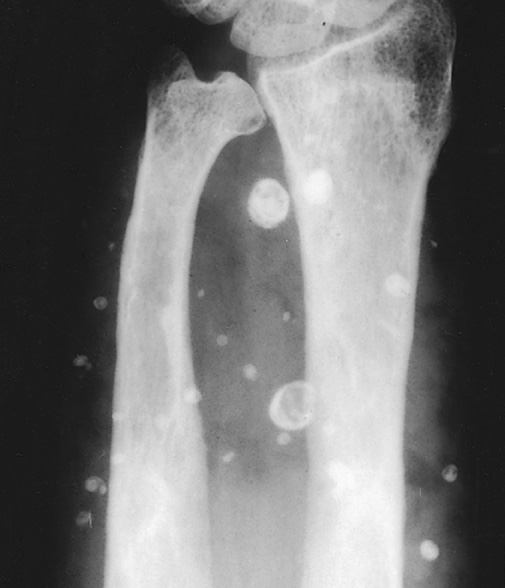
This results from prolonged elevation of the serum calcium (or more importantly serum phosphate) ▸ many causes, but chronic renal failure is the most common
Primary hyperparathyroidism : calcification is typically seen involving arteries, cartilage (chondrocalcinosis), and periarticular tissues
Secondary hyperparathyroidism : soft tissue and vascular calcification is more common than in primary disease ▸ chondrocalcinosis is infrequent
Hypoparathyroidism : predominantly subcutaneous calcification (also with basal ganglia calcification) ▸ osteoslerosis ▸ premature epiphyseal closure ▸ band-like paraspinal calcification (mimicking DISH)
Pseudohypoparathyroidism : there are similar features to hypoparathyroidism but it is associated with growth deformities (rounded facies, broad bones, cone epiphyses, short metacarpals and metatarsals – especially the 1 st , 4 th and 5 th )
Pseudopseudohypoparathyroidism: XR features are identical to pseudohypoparathyrodism (but with a normal serum calcium and phosphate)
Hypervitaminosis D: smooth lobulated amorphous calcium hydroxyapatite masses within the periarticular regions, bursae, tendon sheaths and the joint capsule ▸ dense metaphyseal bands and cortical thickening (± osteosclerosis) in children ▸ most of these features are absent in adults (osteosclerosis may be the only manifestation)
Monkeberg's arteriosclerosis: finer ‘pipe-stem’ calcification seen with medial degeneration
Diabetes: calcification of the small vessels of the feet
Renal failure/hyperparathyroidism : a fine more generalized pattern of arterial calcification
Aneurysms : rounded, curvilinear and crescentic calcification
Phleboliths: these are common and represent a calcified venous thrombus (leading to a small circular calcified density) ▸ they are often seen within pelvic veins ▸ they are also seen in chronic varicosities and cavernous haemangiomas
Maffucci's syndrome : multiple phleboliths (haemangiomas) and enchondromas
Venous incompetence : subcutaneous calcification and organized periosteal new bone formation
Pearl Venous mural calcification is rare
Dystrophic calcification may occur within resolving abscesses (e.g. spine TB)
Extensive calcified lymphadenitis: old TB infection ▸ histoplasmosis ▸ coccidioidomycosis
Leprosy is a rare cause of nerve calcification
Echinococcosis (hydatid): liver and lung calcifications
Schistosomiasis : urinary tract calcifications
Cystercicosis (pork tapeworm: Taenia solium): larvae show a predilection for muscle, subcutaneous tissues and the brain ▸ calcified dead cysts are oval with a lucent centre and are orientated in the direction of the muscle fibres
A congenital connective tissue disorder with an autosomal inheritance and variable penetrance ▸ it is unrelated to myositis ossificans
There is progressive swelling and ossification of the fascia, aponeuroses, ligaments, tendons and skeletal muscle connective tissues
It usually affects the neck and shoulder girdle first (before the onset of multifocal calcification which ultimately progresses to ossification)
Progressive ossification produces large masses that can bridge bones (and can also cause respiratory compromise within the thorax)
Associated skeletal abnormalities : short 1 st metacarpals and metatarsals ▸ small cervical vertebral bodies with relative prominence of the pedicles
Crystal deposition diseases
Dermatomyositis
Scleroderma (progressive systemic sclerosis)
Calcium pyrophosphate dehydrate deposition disease (CPPD)
Become a Clinical Tree membership for Full access and enjoy Unlimited articles
If you are a member. Log in here